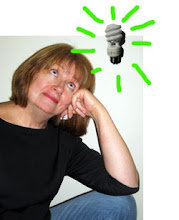
Water, water everywhere...
"But not a drop to drink." Living by the ocean here in Swampscott, water is a resource we tend to take for granted. Of course, you can't drink the ocean water. Our drinking water comes from the Quabbin Reservoir. This year, the Earth Day theme at Salem State College was water: "Troubled Waters: Seeking Ethical & Sustainable Solutions." One of the events was a blind water taste testing conducted by the Economics Club. I had been thinking about doing something similar, so I was really excited to participate.
The hypothesis was related to economics, rather than the environment: "While water comes from different sources and varies greatly in price, the overall difference in water taste will not strongly correlate to these prices." However, if this hypothesis is correct, how can we begin to justify our thirst for a product that is environmentally unsustainable? Yet according to the Beverage Marketing Corporation, "in 2007, total U.S. category volume surpassed 8.8 billion gallons, a 6.9% advance over 2006’s volume level. That translates to over 29 gallons per person, which means U.S. residents drink more bottled water annually than any other beverage, other than carbonated soft drinks (CSDs). " In a decade we have doubled our consumption of bottled water. Along with that consumption comes a mountain of plastic bottles, a petroleum-based product and one that does not biodegrade in landfills, and the waste of energy to transport all those bottles to your local store.
So back to the taste test...
The test was run by Chris Noble, a student at Salem State. There were four samples. One was regular tap water. The other three were purchased waters - Fiji (very expensive at $7.37/gal), Poland Springs ($1.50/gal), and Stop 'n Shop's Arcadia Water ($.99/gal). Based on my own observations, the tap water was easily detectable (after I took the test, I was chatting with Chris, and it came out in the conversation that #1 was the tap water). The other three, however, were almost indistinguishable. I narrowed my preference to two, but could not find any difference between those so I arbitrarily picked one as my choice. Here are the official results:
Results
1. Tap Water
23.7% (9 of 38 votes)
Cost per gallon = $0.007
2. Poland Springs
26.3% (10 of 38 votes)
Cost per gallon = $1.50
3. Fiji Water
28.9% (11 of 38 votes)
Cost per gallon = $7.37
12 pack 1.5L = 34.99/12 = ($2.92 per L) (2.52*) = $7.37
*1 gal = 2.52 L
21.1% (8 of 38 votes)
Cost per gallon = $.99
Apparently some people didn't mind the tap water. Conclusion: "the price of water does not strongly correlate with the taste of the water." If I had done the test, I would have included water filtered in a Brita pitcher (that's what I drink at home and have used Brita-filtered water for over 20 years). I had recently called Brita to find out if the plastic filters can be recycled (they have been doing this in Europe for some time), but was just informed by some friends recently that Whole Foods will take the old filters.
In any case, the expensive Fiji water which comes from an "artesian aquifer" does not taste significantly better than the Poland Springs (which was referred to in a lawsuit as "heavily treated groundwater") or Arcadia water. Weigh that against the environmental downside in the form of billions of plastic bottles and caps (60 million a day) and some objections by local communities to the pumping of the water from the local system and its transfer in bottles to other parts of the world.
Of course there are even bigger issues around water. Two movies to see:
- Blue Gold: World Water Wars (review here)
- Flow
So please pause and think the next time you reach for a bottle of water..and if you are concerned about the quality and safety of your tap water, I encourage you to visit the Safe Drinking Water Information System on the EPA web site. A big thank-you to Salem State College for looking at this issue.
Labels: bottled water, plastic bottles, taste, test

